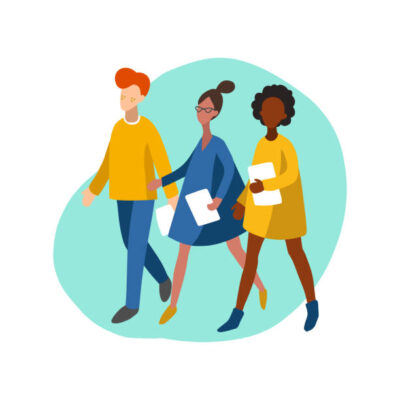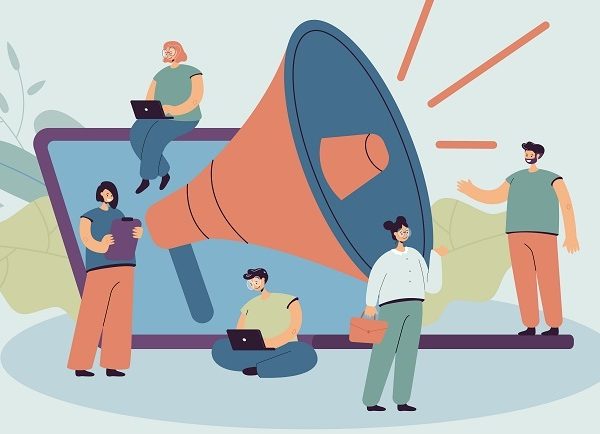As event planners, the focus is shifting to provide not only valuable experiences, but an uplifting environment that positively contributes towards attendee wellbeing.
As we confidently move back to planning events, the virtual element isn’t going anywhere anytime soon. However, the event and meeting format we got used to throughout the past year is changing again. Whilst many teams and customers are ready to be together, it’s important to acknowledge the uncertainty that others might be feeling.
Whether a virtual, live or hybrid event, the question is the same; how can you improve attendee wellbeing?
Here are our 5 tips to make your event more mentally refreshing.

Natural light is accepted as an important design feature in the workplace because of the benefits it delivers
The need for natural light
Natural light is accepted as an important design feature in the workplace because of the benefits it delivers. It can influence productivity, energy and mood, yet it’s easily overlooked when selecting event spaces. Artificial lights, glaring screens and long stints of intense concentration can cause headaches and tiredness, so here are some ways to incorporate natural light into your next event.
Tip 1: Get outside
- Remember when going out for a walk was all we could do? Moving your event out with the usual meeting room and incorporating a walking meeting into the schedule is a powerful way to transform the context of your event.
- Walking meetings work best with a clear topic to discuss and set time-frame. Providing an opportunity for attendees to get outside and connect with the natural environment can positively enhance their wellbeing by re-energising, re-focusing and providing a great talking point afterwards.
- Find blue spaces. The term ‘green space’ is widely recognised, and its benefits have been researched extensively when advocating for more parks and accessible woodlands. However, a growing body of evidence suggests that access to both green and blue spaces will help us lead healthier lives by reducing stress, fatigue and anxiety.
- The benefits of ‘blue space’ (the sea and coastline, or rivers, waterfalls and even fountains) are less publicised. 65% of people experience positive impacts on their wellbeing and mental health when being around water.
Being by water is good for body and mind. So, consider venues with access to water high up in your selection criteria. If it’s an inner-city location you are looking for, access to a public waterway close by, or even a fountain in the hotel lobby, will do the trick.

When it comes to productivity and wellbeing, a little downtime is a good thing
Events are all-encompassing, and as event planners this is an aspect we love! However for delegates, the pressure that comes from constantly being ‘switched on’ when attending events can impact the mindset of delegates. A lack of downtime is likely to lead to increased stress levels, lower productivity and as a result, wellbeing can suffer. Here are some downtime activities to build momentum for the rest of the day.
Tip 2: Offer activities and initiatives
- At your next live event, break with tradition and offer a different type of activity for attendees to get involved with.
- DIY sessions such as candle making or painting will charge delegates’ creative spark in between sessions.
- Joining in with a local charity initiative, such as the Christmas Shoebox appeal, motivates attendees to get involved with worthwhile causes and there’s no doubting the feeling of helping others is impactful.
Different activities will suit different event formats; local charity initiative kits can be easily distributed to your attendees connecting in virtually, but a DIY session would work better within a live event experience. Consider your audience and the feasibility of including all attendees in the downtime activities.

When it comes to productivity and wellbeing, a little downtime is a good thing

The average attention span of someone watching a broadcast is 20 minutes, so think short impactful segments with plenty of opportunities for attendees to get involved.

Combat screen time fatigue
‘Zoom fatigue’ is real. Even before the pandemic, screen time use was on the rise, but now we are at an all-time high of connectivity. Whether attendees are participating via Zoom, or viewing screens at live sessions, long periods of close-up screen time can be intense. Wellbeing shouldn’t fall by the wayside; here are things to consider to combat screen time fatigue.
Tip 3: Create a wellbeing-focused set up
- Ask virtual attendees to use an external keyboard and mouse.
- Increasing the physical space between them and the screen can instantly reduce the pressure on their eyes and help to maintain concentration.
- For delegates attending in-person, offer blue-light glasses to each person before they head into the day’s sessions. A useful keepsake from the event, it also has the added benefit of providing branding and sponsorship opportunities.
- It’s widely known that the increased amount of time we spend using digital screens causes concern for eye health in the long term. Blue light glasses contain lenses that reduce the amount of blue light that reaches the eye, filtering the rays, preventing potential damage and can mitigate side effects such as headaches and eye strain.
- Make engagement easy and keep sessions short and impactful.
- The average attention span of someone watching a broadcast is 20 minutes, so think short, impactful segments with plenty of opportunities for attendees to get involved.
- Q&A sessions, audience polling and 1-to-1 meetings all effectively reduce both live and virtual viewer fatigue.
Incorporate moments of movement into the event schedule
When attending live events, we know that a coffee break and chance to stretch legs provides a much-needed breather. However, with virtual it can feel like we are going from one session to the next with very little movement in between. Follow these suggestions to get your virtual and in-person attendees moving.
Tip 4: Think beyond the office chair and get moving
- Consider leaving a longer break in between virtual sessions than you would for the live equivalent.
- Whilst this may seem like a quick trip to their own kitchen, we understand things can get in the way in our home environment. Plus, there’s not the added presence of the event organiser ushering you back into the meeting room.
- Add a reminder app into the virtual platform you are using. Attendees can set the reminder, grab themselves a cup of tea and be back and ready for the next session starting.
- There are countless sources and guides out there to incorporate moments of movement into the event schedule; from neck stretches and 10 minute yoga sessions to lunch break dance classes.
- Opportunities for mindfulness, other types of breathwork or gentle movement such as stretching can improve performance, productivity and reduce mental and physical fatigue.

Music and wellbeing
The mental benefit of music can add significantly to an event. Research suggests that music can stimulate the body’s natural feel-good chemicals: endorphins and oxytocin. For years, we’ve often experienced motivational ‘walk-in’ music at events, but let’s consider the mental benefits of music that calms or uplifts people’s moods. Here are some suggestions.
Tip 5: Incorporate music to build atmosphere and promote wellbeing
- Listening to music can do some wonderful things for our wellbeing; it helps alleviate stress, express feelings and has the power to change a mood or set a new mood.
- With mindfulness becoming a common practice at the beginning of sessions, try adding motivational or calming ‘walk in’ songs to start the session off right.
- A musical element can be easily transferred from a live event setting to a virtual one, so no attendees miss out on the atmosphere.
- Music doesn’t just make for great entertainment; it can also influence people’s behaviour.
- Consider the type and genre of music you want to play. Loud, fast-paced music makes people move faster, whilst gentle, slow-paced music encourages people to slow down.
Take into account the atmosphere you want to create when selecting a soundtrack. Are you aiming to create a buzz of excitement or a more relaxed environment for delegates? Either way, music is a powerful tool for enhancing attendee wellbeing.
Final thoughts
With an increasing number of companies embracing wellness to keep their staff healthy and happy, now is the time to start thinking about how you can utilise some of these suggestions to make your events more wellbeing focused.

Research suggests that music can stimulate the body’s natural feel-good chemicals


